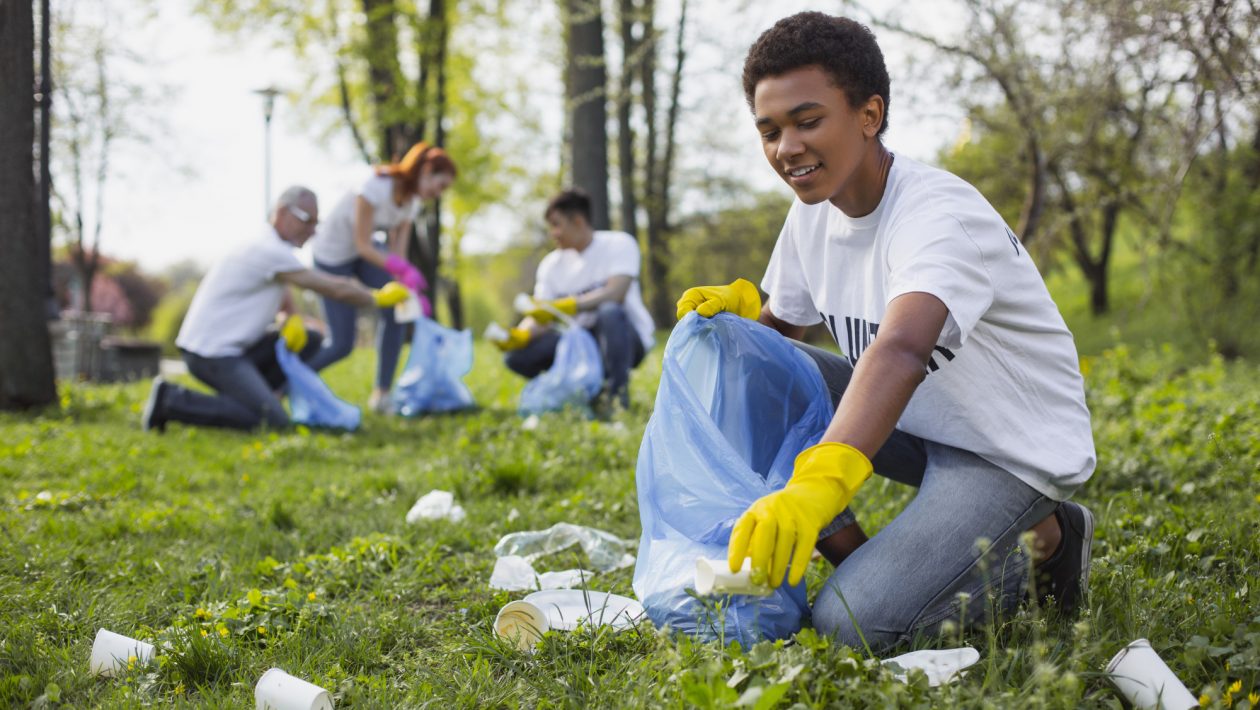Every group of people is a community. From a town of 500 to a city of five million. Communities are found wherever people work together and interact, and we’re all responsible for our part of the earth.
Getting a bunch of communities together is not only a great way to help the city/town, but it’s a great way to meet new people.
Ready to learn how to plan a community clean up? Get your pad and paper out, and learn below.
Table of Contents
1. Find a Group of People
If you’re imagining that your community cleanup is a group of unrelated people from your community, we’re afraid you need to adjust your expectations. Unfortunately, people don’t show up to events (no matter how meaningful) unless they’re motivated by a source close to them.
But that’s okay! You can contact multiple community groups and have them all come together. Start choosing your organizations by deciding if you want young people or adults, mostly, at your event.
Young people have the energy and some physical ability adults don’t have, but you’ll spend more time teaching them. Adults may work slower, but they’ll have a better idea of how to do certain tasks well.
You can always use a mix of ages. If you live in a college town, students are a great resource. Organizations like Sororities and Fraternities are always looking for ways to rack up volunteer hours.
Asking a group of them, and maybe people at your local social or Elks club will get you a good sized mixed group.
Other group ideas include 4H Club, Junior League, Kiwanis, Church groups, local sports teams, etc.
2. Decide on a Project or a Neighborhood
The project you decide on really determines the group of people you need best. If you’re going to a certain community and doing general work, then ages don’t really matter. But if you expect people to do hard physical labor, like pulling weeds and digging holes – younger is better.
Some community cleanup projects focus on one issue, like invasive species. For example, in Florida, there’s one called the “air potato”. It plants itself with things that look like potatoes, but it grows vines up established trees and steals their resources.
If you live in a community with a plant like that, you could focus on ridding it from at least a small area (like a park).
If there was a recent storm, your cleanup could focus on hauling away debris and fixing the damage. Or you could simply help people mow and rake their lawns, plant flowers – etc.
If you’re more inclined towards the last option, see if there are any senior-citizen housing neighborhoods in your area. That’s a good neighborhood to start out helping. Contact someone at the office (if it’s a planned community) or find out if there’s a neighborhood board member you could speak to.
Finally – you could plan a project that creates something completely new, like a bench or builds a Little Free Library. If you go with this option, you’ll need to get approval for the location space, as well as secure materials.
3. Figure Out Logistics
Your project type will determine what kind of supplies you need. If you’re hauling away debris from a storm, you’ll need work gloves, general tools, and pickup trucks – as well as a place to dump the debris.
If you’re doing a neighborhood fixup – who’s going to supply things like rakes and shovels? Do the homeowners have them or do you need to buy and distribute their own?
Supplies for a large group of people are expensive, so where will you get the budget? Local and even chain stores do donations, but you may need to ask months or weeks in advance for it to go through the proper channels of approval.
Day of Logistics
Once that’s settled, you’ll need to figure out how you’ll dive up your groups. If there are multiple projects, how will you decide who goes where? What about transportation?
Speaking of transportation (and things that can happen) you’ll need to have your volunteers sign waivers. Physical labor can cause injuries, and you don’t want to get sued. These volunteers are doing this out of the kindness of their hearts – so they shouldn’t have an issue signing.
Will you supply T-shirts or some other trinket to your volunteers? Giving out T-shirts give people an incentive, and it looks much better in pictures that you can use next year, for marketing purposes.
You can get a good deal on bulk T-shirts from online dealers, and either sell them to volunteers or ask them to donate what they think is fair (though it may be $0).
4. Make Sure You Have Permission
We touched on this before, but if you’re going onto public property, like a park, you’ll need to talk to the right government professionals. They might even agree to help you out, like the people on this page.
If you contact someone at your city manager’s office, they should be able to point you in the right direction. Who knows? They may be able to put you in contact with more volunteers, or vendors who are happy to donate to your cause.
5. Drinks and Snacks
It’s customary to have a table with waters, Gatorade, and snacks when people check into your event in the morning. We know this adds an extra expense to the budget, which isn’t always possible.
If you’re not able to provide these resources, make sure you tell volunteers to bring their own snacks and water. You don’t want someone passing out on the job site because they were counting on you.
6. Take Lots of Pictures
This is, by far, the most forgotten step. If you want to make this a yearly event, you’ll need marketing materials and proof that you did what you said you did.
Before and after photos of damage/yard cleanup are great. Make sure to snapshots of volunteers at work, as long as they give you permission to take the photo.
Planning a Community Clean Up
There’s a lot more planning involved in creating a community event than people think. Community clean up days or projects are a great thing to do – so it’s well worth the planning effort.
If you’re ready to get started, sit down and map out the logistics, then start making some calls!
For tips on projects, you can help with, and what you should aim for – click here for inspiration.











